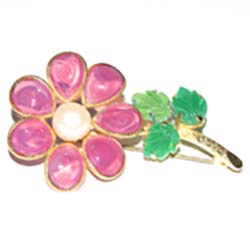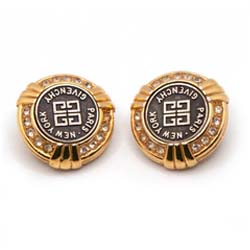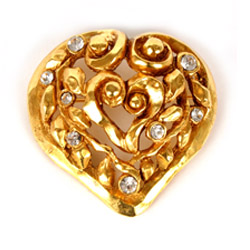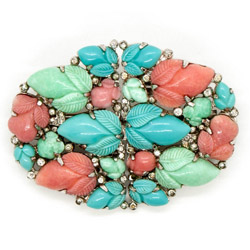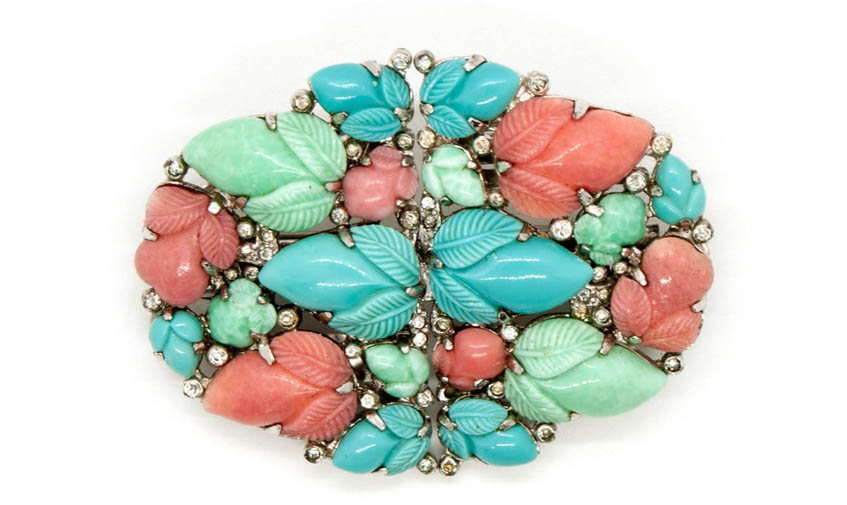How to Identify Trifari Jewellery
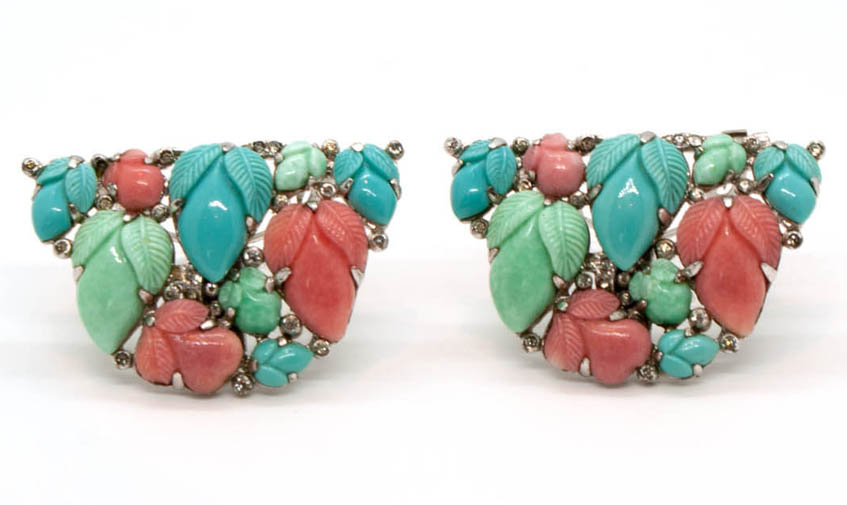
Trifari was formed in the early 1900s by the son of an Italian goldsmith, Gustavo Trifari. By 1925 his business partners, Krussman and Fishel had joined the company and together they created some of the most well-known and collected costume jewellery of the 20th century. The most collectible pieces were designed by their head designer Alfred Philippe during his tenure from 1930 to 1968.
Is Trifari jewellery real gold?
Nope, but they did use real silver during WWII when base metals were required for the war effort. Those pieces will be stamped ‘STERLING’. The use of silver greatly increased the cost of their jewellery, however clients still bought it and loved that the metals didn’t corrode in the same way as base metals. Up until then Trifari jewellery had been made from base metals only. Realizing that customers demanded longer lasting metal jewellery, Trifari set out to create their own, lower cost, non-tarnishing metal alloy. They succeeded and named it Trifanium.
Trifanium
In 1947 Trifari patented a shiny metal alloy which didn’t tarnish. Silver in colour it could be plated with gold to create what they referred to as ‘golden-toned Trifanium’ or plated with rhodium to create the silver coloured look that they named the aspirational ‘platinum-toned Trifanium’. From the 1950s onwards Trifanium formed the base of almost all of Trifari’s jewellery. It has lived up to its credentials. It’s very rare to find a Trifari piece from the 1950s or later on which the metal has tarnished or corroded.
Triamond
There is one caveat to the ‘not real gold’ statement. In the 1970s Trifari introduced a trademarked simulated diamond created in partnership with Raytheon. They named this the Triamond. Advertised as the ‘World’s most sensational alternative to a diamond’ it was intended to compete with fine jewellery. In fact, they released a number of ring designs where the Triamonds were set in 14k ‘real’ gold. These were sometimes accompanied by small rubies, sapphires and emeralds.
Faux pearls
Always seeking the look of real jewels, Trifari developed their own simulated pearls as well. These had an iridescent finish that came from the oyster shells with which they were made. They seem to hold up over time better than pearls made by other costume jewellery companies.
Simulated gemstones
Trifari jewellery is often decorated with fabulous simulated gemstones that make the pieces standout or sparkle. The simulated gemstones were often central to the design such as the Lucite bellies of the Jelly Belly series of pins. These large gems were made from the hard, clear plastic product known as Lucite. Lucite could be cut and polished in a similar manner to glass.
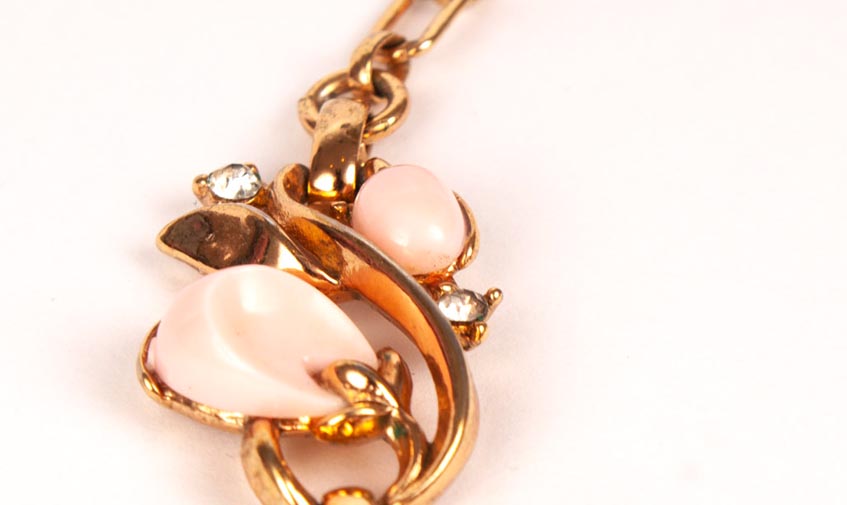
They also favoured pressed glass, as seen in their fruit-salad/tutti-fruiti pieces that collectors love.
Many of the 1950s and 1960s pieces are adorned with rhinestone crystals of many colours.
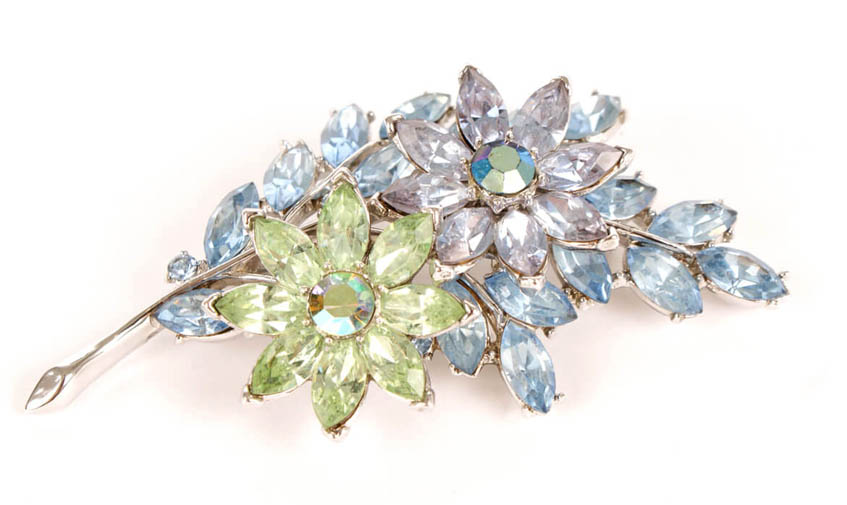
Vintage Trifari Pieces Available to Buy |
|||
|---|---|---|---|
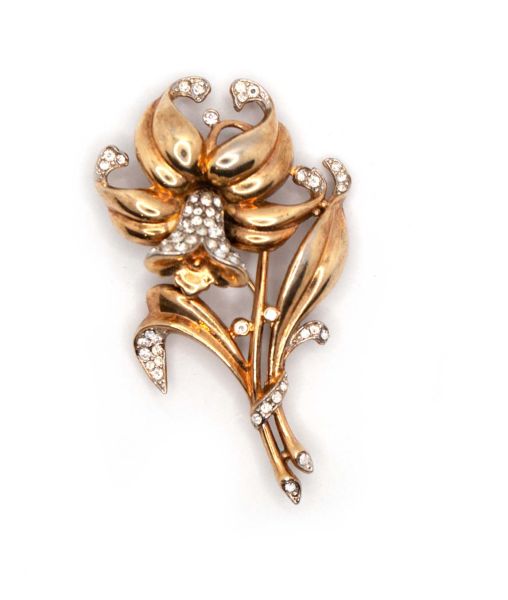
|
1940s Crown Trifari Daffodil Flower Brooch |
||
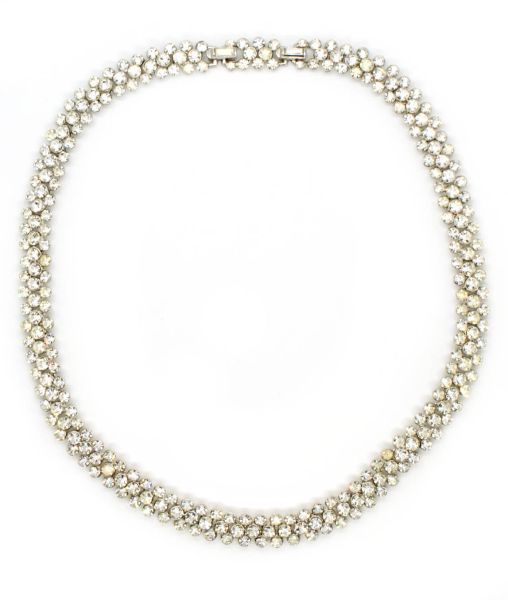
|
Vintage Trifari Crystal Necklace£135.00
|
||
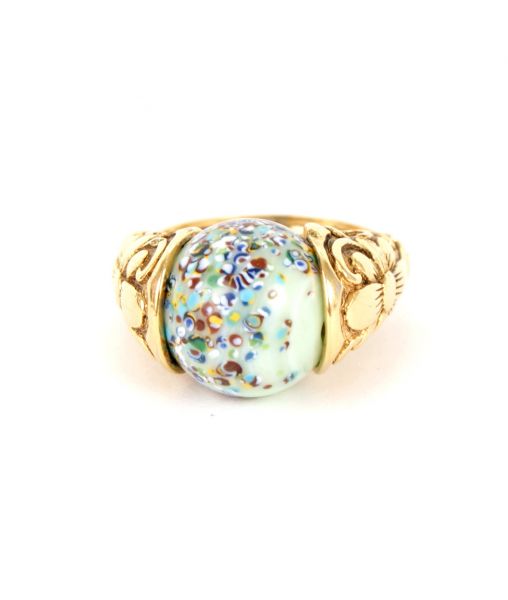
|
Vintage Trifari Art Glass Ring |
||
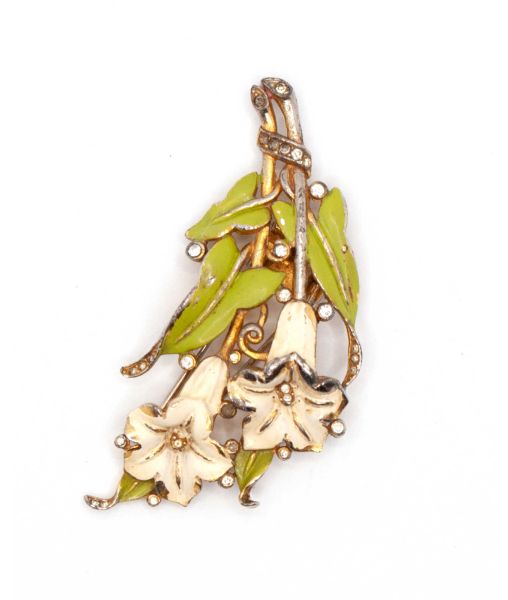
|
Trifari Lilies Enamel Fur Clip 1939 Alfred Philippe£195.00
|
||
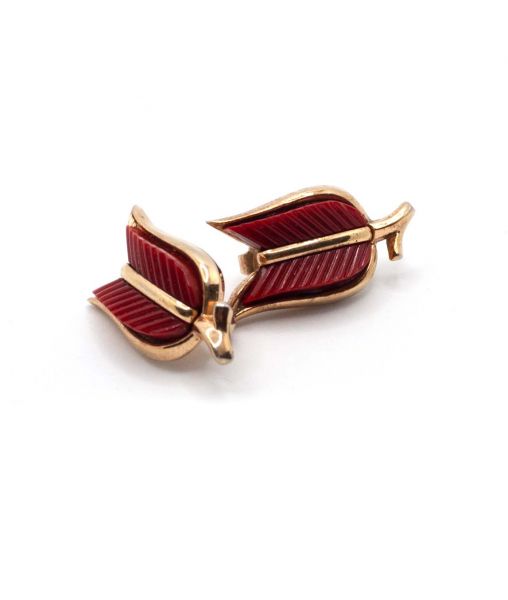
|
Trifari Tulip clip-on earrings |
||
Is Trifari jewellery always marked?
Trifari jewellery from the 1940s onwards is certainly marked. In fact, some of their advertising campaigns stated it’s ‘not authentic unless stamped, Trifari’.
- Early pieces from the 1920s and 1930s will be marked ‘KTF’. These are referred to as ‘TKF’ because the mark stood for Trifari, Krussman and Fishel.
- In the 1930s pieces were often marked TRIFARI PAT. PEND. Eventually a crown was added to this mark.
- Sterling pieces are stamped ‘Sterling’ and ‘Trifari Pat. Pending’.
What is Crown Trifari jewellery?
Eventually the crown was added over the T on the Trifari stamp. In some cases, the crown wouldn’t fit on the findings, so a metal stamped crowned T tag was added.
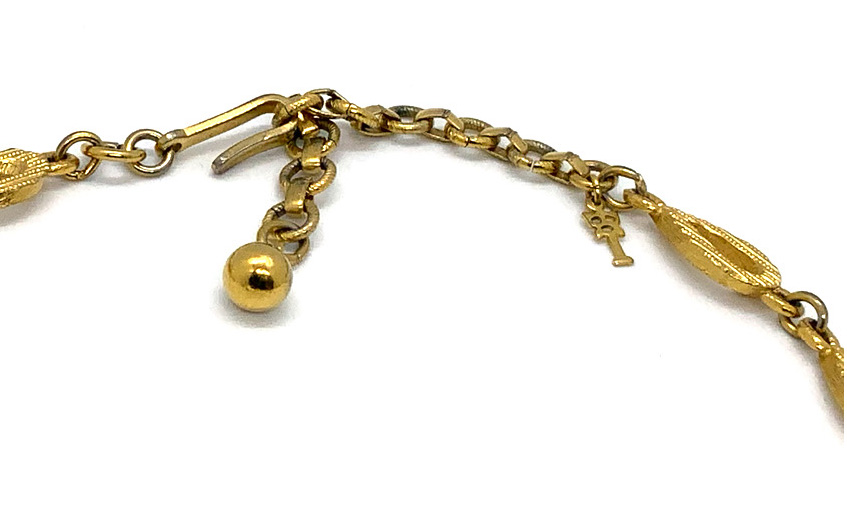
- From 1955 the copyright symbol was added to the stamps.
- Later pieces from the 1970s drop the crown and have the Trifari name in script, often in an oval.
- Pieces from the late 1980s are marked Trifari TM.
Is Trifari jewellery valuable?
As always this depends on the item. The era, material, design and condition will dictate price and desirability. Click through to view our current selection of vintage Trifari jewellery.
Many pieces from the 1950s and 1960s have a contemporary look and are very wearable.
Some of the most sought after and therefore valuable pieces are those created by Alfred Philippe. People love Tutti-Frutti pieces, and certain collections like the colourful Jewels of India are difficult to find. Crown brooches, clip mates, jelly bellies and KTF pieces are highly prized.

